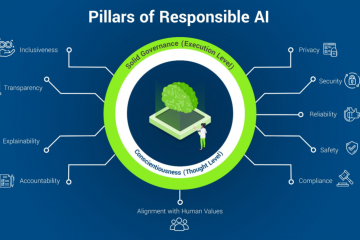In today’s fast-paced digital economy, businesses generate and interact with vast amounts of data daily. However, this data often resides in silos across various systems, making it challenging to extract meaningful insights. Data integration—the process of combining data from different sources into a unified view—has emerged as a critical tool for modern businesses. Below, we explore five key benefits of data integration that can transform how organizations operate and compete.
1. Enhanced Decision-Making
Data integration provides businesses with a unified and comprehensive view of their operations, enabling better decision-making. By consolidating data from multiple sources, companies can access accurate and up-to-date information for strategic planning. This unified view allows leaders to identify trends, forecast outcomes, and respond effectively to market changes. For example, retailers integrating sales and customer data can make informed decisions about inventory management and marketing campaigns136.
2. Improved Data Quality
One of the most significant advantages of data integration is the improvement in data quality. Disparate systems often lead to duplicate, inconsistent, or incomplete records. Integration processes cleanse and harmonize data, ensuring accuracy and reliability. High-quality data reduces errors in reporting and decision-making while fostering trust in analytics outcomes. For instance, finance teams can rely on integrated systems to produce error-free financial reports147.
3. Increased Efficiency and Productivity
Data integration streamlines workflows by automating the consolidation of information from multiple sources. This eliminates the need for manual data entry or repetitive tasks like reconciling datasets. Employees save time searching for information and can focus on high-value activities instead. For example, marketing teams with integrated campaign data can quickly analyze performance metrics without spending hours gathering information from different platforms457.
4. Enhanced Customer Experience
A unified view of customer data across touchpoints—such as sales, support, and marketing—allows businesses to deliver personalized experiences. Data integration enables companies to understand customer preferences and behavior better, leading to tailored recommendations and improved satisfaction. For example, e-commerce platforms use integrated systems to provide personalized product suggestions based on browsing history149.
5. Competitive Advantage Through Innovation
Integrated data fosters innovation by uncovering hidden patterns and opportunities that siloed systems might overlook. Businesses can leverage these insights to develop new products, services, or strategies that align with market demands. Additionally, integrated systems allow organizations to adapt quickly to changes by providing real-time insights, ensuring they stay ahead of competitors6710.
Breaking Down Data Silos
Data silos are one of the biggest barriers to operational efficiency in modern businesses. Integration eliminates these silos by creating a centralized repository accessible across departments. This promotes collaboration between teams like sales and marketing or finance and operations, ensuring everyone works with the same reliable data set36.
Cost Savings Through Automation
By automating manual processes like data entry and reconciliation, businesses can significantly reduce labor costs associated with managing multiple systems. Moreover, maintaining a single integrated platform is more cost-effective than operating several disconnected databases or applications47.
Scalability for Growing Businesses
As businesses grow, so does the complexity of their data landscape. Modern integration solutions are designed to scale with organizational needs, accommodating new data sources and larger volumes without disrupting existing workflows. This scalability ensures that businesses remain agile as they expand into new markets or adopt emerging technologies16.
Improved Data Security and Governance
Data integration enhances security by centralizing sensitive information under robust governance frameworks. Organizations can enforce consistent policies for access control, compliance, and auditing across all integrated systems—a critical feature for industries dealing with strict regulatory requirements like healthcare or finance910.
Conclusion
Data integration is no longer a luxury but a necessity for modern businesses aiming to stay competitive in an increasingly data-driven world. From enhancing decision-making to improving customer experiences and fostering innovation, the benefits are transformative. By investing in robust integration strategies, organizations can unlock the full potential of their data assets while positioning themselves for long-term success in a dynamic marketplace.

0 Comments